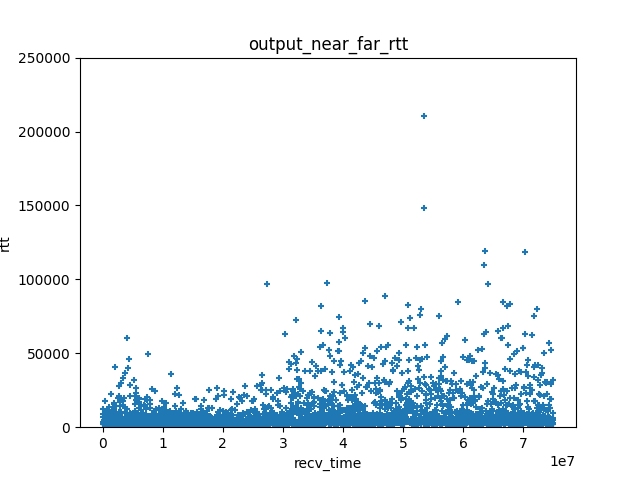

05 Nov 2025
For the past 6 months, I have been working on a new congestion control algorithm, called C4 for “Christian’s Congestion Control Code”, together with Suhas Nandakumar and Cullen Jennings at Cisco. Our goal is to design a congestion control algorithm that serves well real time communication applications, and is generally suitable for use with QUIC. This leads to the following priorities:
Out of those three priorities, the support for “questionable” Wi-Fi had a major influence on the design. We got reports of video not working well in some Wi-Fi networks, notably networks in office buildings shared by multiple tenants and appartment buildings. Analyzing traces showed that these networks could exhibit very large delay jitter, as seen in the following graph:

In presence of such jitter, we see transmission sometimes stalling if the congestion window is too small. To avoid that, we have to set the congestion window to be at least as large as the product of the target data rate by the maximum RTT. This leads to our design decision of tracking two main state variables in C4: the “nominal data rate”, which is very similar to the “bottleneck bandwidth” of BBR (see BBR-draft); and the “nominal max RTT” which is set to the largest recently experienced RTT as measured in the absence of congestion.
The support for application limited flows is achieved by keeping the nominal data rate stable in periods of low application traffic, and only reducing it when congestion is actually experienced. C4 keeps the bandwidth stable by adopting a cautious bandwidth probing strategy, so that in most cases probing does not cause applications to send excess data and cause priority inversions.
C4 uses a “sensitivity” curve to obtain fairness between multiple connections. The sensitivity curve computes sensitivity as function of the nominal data rate, ensuring that flows sending at a high data rate are more sensitive than flows using a lower data rate, and thus reduce their data rate faster in response to congestion signals. Our simulations shows that this drives to fair sharing of a bottleneck between C4 flows, and also ensure reasonable sharing when sharing the bottleneck with Cubic or BBR flows.
We have published three IETF drafts to describe the C4 design, C4 algorithm specifications, and the testing of C4. The C4 repository on Github contains our C implementation of the algorithm, designed to work in Picoquic, as well as testing tools and a variety of papers discussing elements of the design.
The code itself is rather simple, less than 1000 lines of C including lots of comments, but we will need more than one blog post to explain the details. Stay tuned, and please don’t hesitate to give us feedback!
If you want to start or join a discussion on this post, the simplest way is to send a toot on the Fediverse/Mastodon to @huitema@social.secret-wg.org.